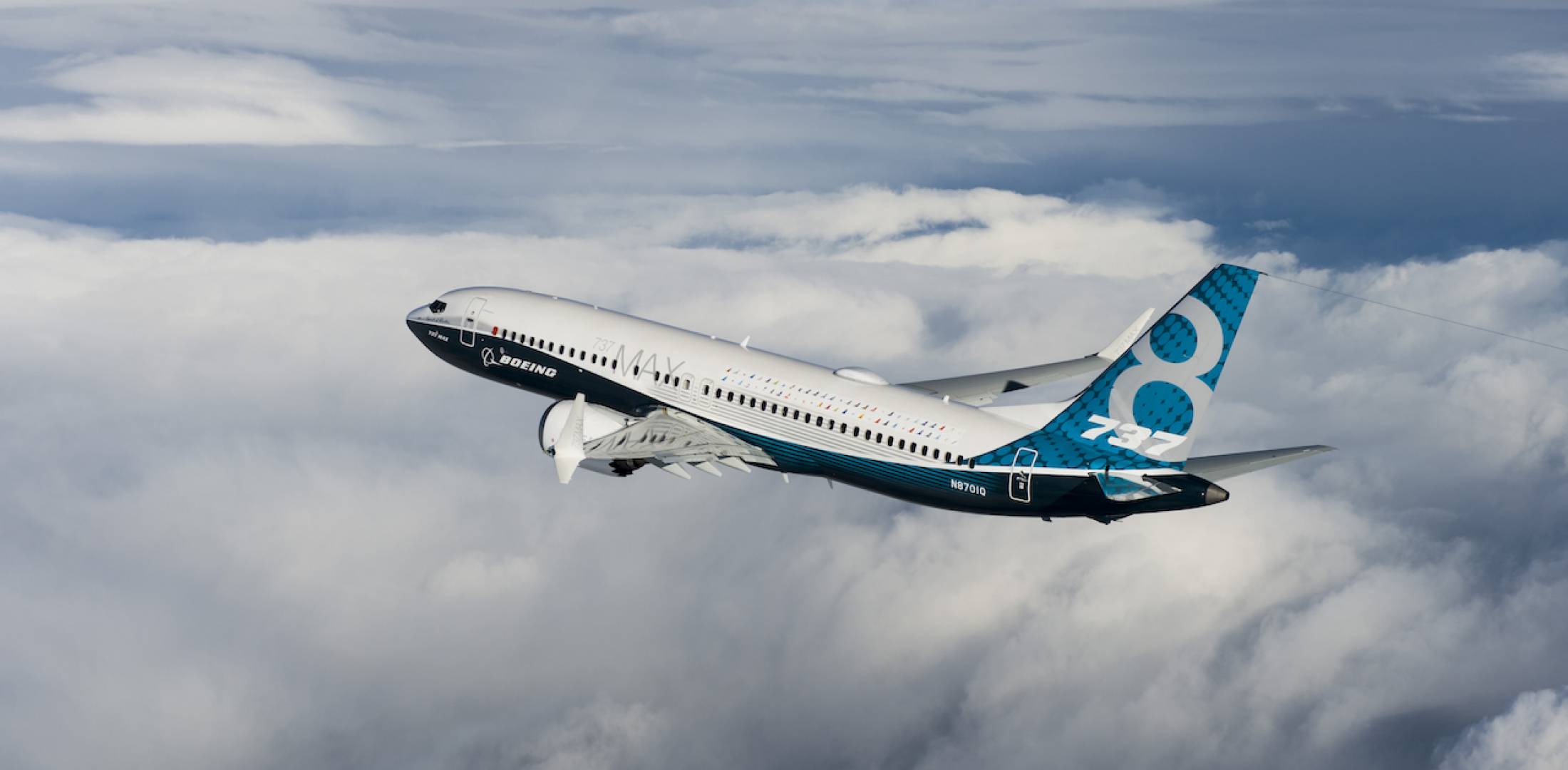Boeing does not owe the public, including its shareholders, an immediate explanation for what happened to an Ethiopian Airlines 737 MAX 8 that crashed after takeoff yesterday, killing everyone onboard. But it would be wise to address the issue in a more tactful way.
Thus far, Boeing has only released a general statement on the crash that can be charitably termed cautious:
Boeing is deeply saddened to learn of the passing of the passengers and crew on Ethiopian Airlines Flight 302, a 737 MAX 8 airplane. We extend our heartfelt sympathies to the families and loved ones of the passengers and crew on board and stand ready to support the Ethiopian Airlines team. A Boeing technical team will be travelling to the crash site to provide technical assistance under the direction of the Ethiopia Accident Investigation Bureau and U.S. National Transportation Safety Board.
We can assume its entire legal department carefully weighed every single word of this statement in a way to avoid even the slightest hint of fault. That’s their job, of course, and it may well be that Boeing is the innocent party here.
But Boeing has a problem on its hands. Besides the fact that the commonality of the two crashes is alarming, the 737 MAX includes a new flight control system that seeks to auto-correct when sensors perceive a stall. That correction includes pushing the nose of the aircraft down to circumvent an anticipated stall. The technology is unique to the 737 MAX and caught many pilots, including for U.S. airlines like Southwest and United, off guard. For whatever reason, Boeing did not originally detail this change in safety manuals.
After the Lion Air crash, Boeing quickly issued an update to its pilot procedure guide for the 737 MAX:
#FAA Statement regarding its Airworthiness Directive and the @Boeing Flight Crew Operations Manual Bulletin. pic.twitter.com/MXD9cBsHDD
— The FAA ✈️ (@FAANews) November 7, 2018
While that update may simply have been out of an abundance of caution, people are talking about it. People are speculating about it…fears are rising. And when Boeing doesn’t address it, people become suspicious.
What Boeing Should Say
Instead of simply expressing condolences about the crash, Boeing would be wise to emphasize four things to the public:
- Safety is paramount.
- Boeing will not rest until it gets to the bottom of what happened.
- Under no circumstance would Boeing ever jeopardize the risk of the flying public.
- Boeing will redouble efforts to ensure that pilots understand the updated technology on the 737 MAX.
Maybe it is just me, but that would send a far more calming signal than stating simply Boeing will send a technical team to help investigate. Boeing needs a Checkers speech…
CONCLUSION
As I wrote about earlier, the worst thing we can do now is to engage in fear-mongering speculation that fails to draw us closer to the truth. I have a hunch about what happened…and I am certainly not going to share it here. As if I am a technical expert…
But Boeing should better understand the public mood. I certainly sense it as a daily writer on aviation. Boeing must be proactive and not reactive whether there is a design flaw or not on the 737 MAX.
Are you happy with Boeing’s response to the Ethiopian Airlines crash?





The stock is diving in the futures so, what do they have to lose at this point. Might as well address it straight on.
Agree.
Mathew your version is just more PR spin.
Boeing know exactly what happened. with the larger engine using less fuel to compete with Airbus they made the 737 unstable. The computer control over the pilot was initially hidden and the plane could only be saved by turning it off. Now that 300+ are dead. Does boeing admit guilt of poorly implemented and inspected design, very unlikely. As they will be sued as they should be . There should be management and design blood on the floor as there is on the fields of Africa and not bragging about how great US pilots are because they didn’t crash in the US
It’s just you. They don’t need better PR, they need safe planes.
Boeing should find the problem now and they and the airlines that own them should ground all MAXs until they do.
But we cannot say if the problem is a design flaw, lack of training, or pilot error. There is no reason for Boeing to admit guilt/failure if it does not actually exist. That will take time and an investigation. But it needs to address the elephant in the room.
Exactly my point-we don’t know and Boeing and the airlines apparently do not either. Amd until there is at least an early imdication that this is not a design problem, the MAXs should be grounded.
That’s how Boeing should evidence concern for customer safety-not by PR releases that say ‘how much we care’.
It is not in Boeing’s DNA to bother about trivial things like public relations, lest their expressions of regret/remorse/care be construed as an admission of something more.
You will recall ( or at least have read about..) the Lauda Air crash in Thailand ( DMK-VIE, 767, uncommanded deployment of thrust reverser, 250 plus died).
You might not recall the extraordinary lengths Boeing went to to try to avoid scrutiny of the system failures that resulted in that tragedy. Deny, deny, deny. It was really more the force of personality of Nikki Lauda , and his very public campaign, that finally resulted in concessions from Boeing.
It is not a very consumer-focused company.
Generally make great planes but PR is not their strong suit.
I’ll say it. I’ll put my money on poorly trained pilots who found themselves in a situation they couldn’t cope with.
Relatively low time captain (8000 hours) and extraordinarily low time copilot (200 hours).
Although it’s true that the ET and Lion Air accidents seem quite similar, it must also be said that both accidents were in regions of the world where airline operations are not as safe as other parts of the world.
Thanks – for once, an honest post on here!
After the Asiana crash in SFO, a pilot friend of mine said that many non-US airlines employ people that are more “flight managers” than pilots which is why they didn’t recognize their glide slope was way off with the inop ILS.
Let’s see Tesla, Toyota, Fiat, Samsung could also have blamed users for their defective products and offered fake remorse and sugar coated concerns l, but no the did the right thing. Recalls.
I agree with what others have said about airline safety in the rest of he world. The US is aggressively safe and that’s how it should be, in my opinion.
That being said, it seems that the 737MAX may have some differences in operation requiring pilots to have that additional training on top of their 737NG expertise. Boeing should offer to fly out and train all pilots that operate the plane at their HQ on their dime. It would show concern without admitting fault with the plane’s design.
Well said, Matthew.
Boeing needs to be doing much better PR at the moment (as someone else noted, not their strong point historically). They can easily do this without admitting fault, which they certainly should not unless and until some evidence comes to light that there is a design fault in the aircraft or its computers.
China and Indonesia had clear political/economic motives to ground the aircraft speculatively, without waiting for evidence. Two accidents occurring in takeoff/climb phase on this type raises legitimate questions. As it stands however, we really don’t know the two accidents are related at all (some witnesses on the ground have said the Ethiopian plane was already on fire for example as it came down, which would be a very different scenario from the Lion air accident, although crash witnesses are notoriously unreliable).
People need to take a deep breath and be patient, and Boeing – with a historically brilliant safety record – should be more proactive in highlighting their commitment to this.
I knew that china have a trade war against us. What about Indonesia? They solemnly obey all and any commands from us politician from time to time. In most previous accidents, technical staff from boeing get to the site along (if not faster) than local investigator, to cover up any hiccups.
Don’t try to sound intellect by giving stupid argument for sake of proud nationalism, please.
Spare my your pro-China BS. I don’t blame the gov’t for using every tool at its disposal to hurt the USA. But see it for what it is. And don’t confuse Indonesia’s role in this. You’re so predictable.
Huh? Did I trigger something?
“I have a hunch about what happened…and I am certainly not going to share it here.” Why not Matthew? That’s what we need you for.
So… UK and Singapore after Malaysia and Australia. Politics much? Let’s create a story, maybe Canada and Bombardier can be a good scape goat? *Sarcasm
I stand by my assessment and my assessment of you.
Thanks. I know I’m right. Took a lot of courage for you to admit that.
One very important and worth pondering aspect to note. Multiple countries across globe have grounded this model, reason number one abundance precaution until investigation results are out, reason number 2 aviation experts have a consensus opinion that the root cause needs to be identified now. For a layman if this is the advanced version of previous plane it was supposed to be safer (economics, seating capacity are all secondary aspects), but recent two incidents pose a sincere serious question, point is do we have a sincere serious answer ? I was onboard spicejet plane (same model) last month on my journey back from Goa, everything seemed fine, except stability, pilot during flight kept on announcing that there was “turbulence issue”, my feeling was that it was not normal, even I thought of registering feedback with airlines, but I did not, probably when you land safely you tend to keep your experience on backburner.
One very important and worth pondering aspect to note. Multiple countries across globe have grounded this model, reason number one abundance precaution until investigation results are out, reason number 2 aviation experts have a consensus opinion that the root cause needs to be identified now. For a layman if this is the advanced version of previous plane it was supposed to be safer (economics, seating capacity are all secondary aspects), but recent two incidents pose a sincere serious question, point is do we have a sincere serious answer ? I was onboard spicejet plane (same model) last month on my journey back from Goa, everything seemed fine, except stability, pilot during flight kept on announcing that there was “turbulence issue”, my feeling was that it was not normal, even I thought of registering feedback with airlines, but I did not, probably when you land safely you tend to keep your experience on backburner.
So where do you stand now with your hunch? Are you still doing Boeing’s bidding or are you accepting of the fact that Boeing have produced a deeply flawed aircraft as a result of focusing too much on the stock options? This episode is playing out in a slow and steady decay of trust in Boeing and by implication the FAA processes. It is depressing to see the senior management looking to evade responsibility for something that was exclusively their fault.
No one would have died if MCAS had not been initiated, the initiation arose from non redundant single point failure, MCAS was needed because of a sub-optimal design, the design arose out of the desire for commonality and cost cutting, the commonality and cost cutting benefitted Mr Muilenburg’s remuneration